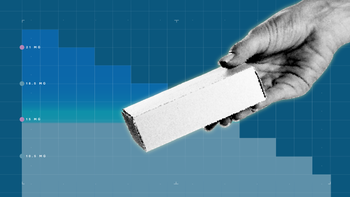
Treating Bipolar 1: Medications, Cognitive Behavioral Therapy, and More
Key takeaways:
Bipolar 1 disorder is a mental health condition that causes mood episodes. Mood episodes in bipolar 1 disorder include depression, mania, and hypomania.
Bipolar 1 disorder is usually treated with medications. But therapy — like cognitive behavioral therapy (CBT), psychoeducation, and family-focused therapy (FFT) — can help too.
The most common types of medications used to treat bipolar 1 disorder are antipsychotic medications, mood stabilizers, and antidepressants.
Treatment for bipolar 1 disorder isn’t one size fits all. The right treatment for you depends on many factors.
Table of contents

Bipolar 1 disorder is a mental health condition that causes mood episodes that come and go over time. It affects more than 1 in 25 American adults at some point in their life.
If you, or a friend or family member, have been diagnosed with bipolar disorder, you may be wondering what type of treatments can help. Though there’s no cure for bipolar 1 disorder, medications and therapy can both go a long way toward getting your symptoms under control and preventing relapses.
What is bipolar 1 disorder?
Bipolar 1 disorder is a mental health condition that causes mood episodes. Mood episodes are periods of time where you experience major changes in how you think, feel, and behave.
To be diagnosed with bipolar 1 disorder, you need to have at least one episode of mania. But mania isn’t the only type of mood episode you could have. You may also have depression or hypomania.
Here’s what those terms mean:
Depression: Bipolar depression makes you feel sad, hopeless, or down. Other symptoms of depression include low energy, poor sleep, lack of interest in your daily life, and even thoughts of death or suicide.
Mania: Mania makes you feel excited, elevated, or irritable. During a manic episode, you may be very distracted, or like you’re “on top of the world.” A manic episode can also cause impulsive or reckless behavior, increased activity, poor sleep, and more. These symptoms last for 1 week or longer, and they can cause problems with money, relationships, or even the law.
Hypomania: This is similar to mania, but the symptoms aren’t as severe and don’t last as long.
Some people with bipolar disorder will only have a couple of mood episodes during their lifetime, while others have them much more frequently.
How is bipolar 1 disorder treated with medication?
When it comes to treating bipolar 1 disorder, medications are usually the best choice.
There are many different medications for bipolar 1 disorder. Some medications work best for mania, while others work best for depression. And some medications are good at preventing future mood episodes (called “maintenance” treatment).
The right medication for you depends on whether or not you’re currently in a mood episode, and what type of symptoms you have. It also depends on what’s worked well in the past, and what medication you’re already taking for bipolar when the mood episode starts.
In short: When it comes to treating bipolar disorder, medications aren’t one size fits all.
Let’s take a closer look at some types of medications most commonly used to treat mania and depression — and for maintenance.
Medications for treating mania
Medications are the first-choice treatment for a manic episode. They can help manage your symptoms and prevent them from getting worse. A lot of the time, multiple medications are used together to get a manic episode under control.
Medications used to treat mania include:
Antipsychotic medications: Antipsychotic medications affect how certain molecules behave in your brain, like dopamine and serotonin. This seems to help with certain symptoms, like hallucinations, delusions (false beliefs), and trouble thinking clearly. Examples of antipsychotics used to treat mania include olanzapine (Zyprexa), risperidone (Risperdal), quetiapine (Seroquel), and aripiprazole (Abilify).
Mood stabilizers: Mood stabilizers seem to work by calming certain types of activity in your brain, which can help to balance mood. Mood stabilizers used to treat mania include lithium, carbamazepine, and valproate (Depakote, Depakene).
Benzodiazepines: Benzodiazepines can help to manage symptoms during a manic episode, like agitation, restlessness, and problems sleeping. They’re usually only used short term, until your symptoms are partially under control.
Medications for treating bipolar depression
Medications are also the first-choice treatment for bipolar depression. Again, these medications are sometimes used on their own — and they are sometimes used together.
Medications used to treat bipolar depression include:
Antipsychotics: These are the same types of medications used for mania. First-choice options for bipolar depression include olanzapine (Zyprexa), quetiapine (Seroquel), and lurasidone (Latuda).
Mood stabilizers: Again, these are the same types of medications used for mania. Lamotrigine (Lamictal) and lithium are two commonly used medications for bipolar depression.
Antidepressants: These are medications that affect serotonin, norepinephrine, and other molecules in your brain. This seems to help depression symptoms get better. Because antidepressants can increase your risk for having a manic episode, they’re often used together with a mood stabilizer. Examples include bupropion (Wellbutrin), fluoxetine (Prozac), and venlafaxine (Effexor).
There’s also a combination medication used to treat bipolar depression, called Symbyax. Symbyax contains two medications: olanzapine and fluoxetine.
Maintenance medications for bipolar disorder
Once your symptoms of mania or depression are under control, the next step is preventing another mood episode from happening. This is called maintenance treatment. It’s especially important in the first 6 months after a mood episode, when you’re most likely to have a relapse.
For most people, the best maintenance medications are whatever has already worked. For example, if quetiapine (Seroquel) helped you recover from a manic episode, it could be a good first choice for you for maintenance.
If staying on the same medications isn’t an option — because of side effects, long-term health risks, or other issues — your healthcare provider can work with you to find an alternative.
Top choices for maintenance include:
Lithium
Valproate
Carbamazepine
Lamotrigine
All of these medications are mood stabilizers that are considered good options for maintenance treatment. Sometimes an antipsychotic or an antidepressant will be added too.
The right medication for you depends on many different things, including your unique symptoms. There are other considerations as well, like whether or not you have side effects, or are planning to become pregnant. For example, some medications (like valproate and carbamazepine) aren’t as ideal for use during pregnancy.
Will you have to be on maintenance medications for the rest of your life?
It’s hard to say. The length of maintenance treatment is different from person to person. Some people take medication(s) for a few years, while others take them for life.
There are many things that can affect how long you should stay on medication. These include:
How many years you’ve had bipolar 1 disorder
How many mood episodes you’ve had in your lifetime
Whether or not you’ve been hospitalized for bipolar 1 disorder treatment
How long it took you to recover from mood episodes in the past
How much time has passed since your last mood episode
Whether or not you’ve made a serious suicide attempt in the past
Whether or not you have side effects
Whether or not you’re trying to become pregnant
Your other mental and physical health problems
Deciding to stay on medication, or to taper off, is something to talk over with your healthcare provider. They can help you understand the pros and cons of staying on medication long-term.
How can therapy help with bipolar 1 disorder?
Bipolar 1 disorder is usually treated with medication. But therapy can help too — especially for maintenance treatment between mood episodes. Some types of therapy can help with mood symptoms as well, like depression or irritability.
When you have bipolar 1 disorder, therapy can potentially have many benefits. These might include:
Preventing new mood episodes (relapses)
Helping you stay motivated to take your medication
Giving you a better understanding of what bipolar 1 disorder is and how it’s treated
Helping you to accept and understand your diagnosis
Providing you, and your family, with social support
Teaching you to recognize and manage your triggers for mood episodes
Teaching you how to recognize early warning signs of a mood episode
What types of therapy are used to treat bipolar 1 disorder?
There are many different types of therapy used to treat bipolar 1 disorder. Just as with medications, if a certain type of therapy worked well for you during a mood episode, it may be a good first choice for maintenance as well. Some people also choose to do more than one type of therapy at once, like individual cognitive behavioral therapy (CBT) and group psychoeducation.
Here are some of the top choices.
Group psychoeducation
This is a type of group therapy where you learn about bipolar disorder. It’s considered one of the best types of therapy for bipolar. There’s evidence that it can prevent new mood episodes from occurring, reduce hospital stays, and encourage you to keep taking your medication.
Cognitive behavioral therapy (CBT)
CBT is a type of therapy that helps you to understand your thoughts, behaviors, and emotions — and how they all influence each other. It’s also one of the top therapies for bipolar 1 disorder, especially during depressed episodes. CBT can also help with many other mental and physical health conditions too.
Interpersonal and social rhythm therapy (IPSRT)
Interpersonal and social rhythm therapy (IPSRT) is a type of therapy where you learn to build healthy daily routines and to nurture strong relationships with other people. This seems to help people with bipolar disorder become more stable and resilient in day-to-day life. IPSRT hasn’t been studied as much as CBT or psychoeducation. In one small study, IPSRT did help people with bipolar disorder function better and have fewer symptoms.
Family-focused therapy (FFT)
Family-focused therapy (FFT) includes other people involved in your care, like your parents, spouse, or family members. In FFT, you and your family learn about bipolar disorder and how to better communicate and problem solve with each other. There’s evidence that together with medication, FFT helps people recover more quickly from mood episodes and can also prevent relapses.
Dialectical behavior therapy (DBT)
This is a type of therapy that can help you learn to better manage strong emotions and to be more present in your daily life. There hasn’t been a lot of research yet on dialectical behavior therapy (DBT) for bipolar disorder. However, there is some evidence that it can help with some symptoms.
When to see a mental health professional for bipolar 1 disorder
If you’re concerned about bipolar 1 disorder, it’s always a good idea to talk to your healthcare provider. In many cases, an experienced healthcare provider can diagnose you with bipolar 1 disorder just by talking with you about your symptoms.
Your provider might also:
Do a physical exam
Ask you questions about your family members, as bipolar 1 disorder can run in families
Ask to talk to your friends and family, to get more information
Suggest basic lab tests, to rule out medical causes for your symptoms
If your provider suspects bipolar 1 disorder, they may recommend you meet with a psychiatrist. A psychiatrist is a medical doctor with special training in bipolar 1 disorder (and other mental health conditions).
Do I need to go to the emergency room?
If you are experiencing life-threatening symptoms, you should call 911 or go to the emergency room as soon as possible. These symptoms include:
Planning a suicide attempt
Planning to harm yourself or another person in any way
Having symptoms that make it impossible to take care of yourself, including not being able to manage adequate food, clothing, or shelter
Engaging in risky, dangerous, or extreme behavior
Where can I find more resources for bipolar 1 disorder?
For more information on bipolar disorder and treatment, here are some trusted resources:
The bottom line
Bipolar 1 disorder is a mental health condition where you have mood episodes that come and go, such as depression, mania, and hypomania. These mood episodes can cause many different symptoms that get in the way of your day-to-day life.
Fortunately, treatment can help. The right treatment for you will depend on your symptoms, your past mood episodes, and even your personal preferences.
For most people, medication is the best first-choice treatment — though the type of medication can vary widely from person to person. Top medication options include antipsychotics, mood stabilizers, and antidepressants. Talk therapy is also helpful for many people with bipolar 1 disorder, including CBT, FFT, and group psychoeducation.
Why trust our experts?


References
American Psychiatric Association. (2010). Practice guideline for the treatment of patients with bipolar disorder second edition.
American Psychiatric Association. (2021). What are bipolar disorders?
American Psychiatric Association. (2022). Bipolar I and bipolar II disorders.
Jones, B. D. M., et al. (2023). A systematic review on the effectiveness of dialectical behavior therapy for improving mood symptoms in bipolar disorders. International Journal of Bipolar Disorders.
Marzani, G., et al. (2021). Bipolar disorders: Evaluation and treatment. American Family Physician.
Miklowitz, D. J. (2019). Different types of therapy for bipolar disorder. National Alliance on Mental Illness.
Miklowitz, D. J., et al. (2016). Family-focused therapy for bipolar disorder: Reflections on 30 years of research. Family Process.
Mind. (n.d.). Antipsychotics.
Mind. (n.d.). Lithium and other mood stabilisers.
National Institute of Mental Health. (n.d.). Bipolar disorder.
Psychiatry and Clinical Pharmacology. (2021). Maintenance treatment in bipolar disorder: What do guidelines recommend?
Rabelo, J. L., et al. (2021). Psychoeducation in bipolar disorder: A systematic review. World Journal of Psychiatry.
Steardo, L., Jr., et al. (2020). Efficacy of the interpersonal and social rhythm therapy (IPSRT) in patients with bipolar disorder: Results from a real-world, controlled trial. Annals of General Psychiatry.
Substance Abuse and Mental Health Services Administration. (2016). Impact of the DSM-IV to DSM-5 changes on the National Survey on Drug Use and Health.
For additional resources or to connect with mental health services in your area, call SAMHSA’s National Helpline at 1-800-662-4357. For immediate assistance, call the National Suicide Prevention Lifeline at 988, or text HOME to 741-741 to reach the Crisis Text Line.

























